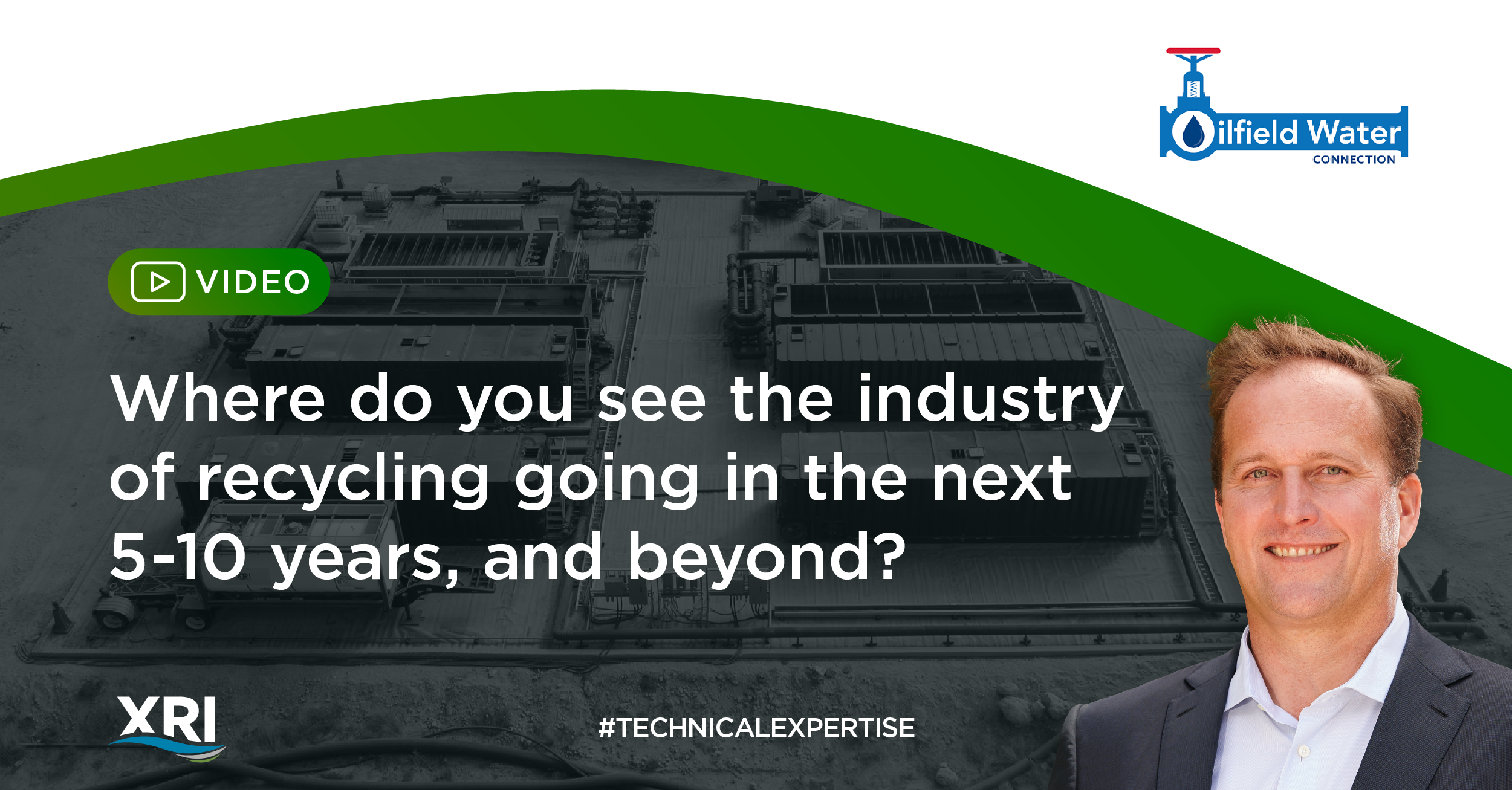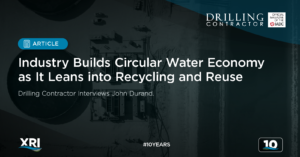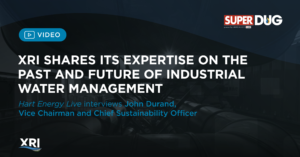XRI’s COO, Dr. Chris Harich, answers this industry of recycling question during his panel appearance at the 2022 Oilfield Water Markets Conference.
TRANSCRIPTION:
Wells in the Permian Basin over the next five years…we’re gonna go up to about 33,500 wells that we drill between now and 2025. With that, we’re gonna need about 20 billion barrels of water to support those completion efforts. We’re gonna get probably over 40 billion barrels of water back. I think it’s, it is kind of a water balance. I think we can actually say, “Hey, if we can drive, give points for ESG, give more people using recycled produced today, we’re only using maybe 10, 15% per base, which is crazy, right?” We need to drive that number up a lot higher, this 40-50%. I like that one.
The other thing is, I actually take water back. You know, when we pop a 12-wheel pack, I supplied that water seven million barrels. I take that water back for that same operator. It takes 18 months for me to see that seven million barrels back. So there is a delay, there is a retardation in the system and built in, right, that I get it back over a slower period of time. So I think that’s gonna be to our benefit, but, but I think ESG hopefully will drive operators to using more recycled produced. We’re seeing it right now with the super majors. Some people will pay me more, believe it or not, because I do have practice say, say, groundwater Wells. They’ll pay me a little bit more to use recycle produced. Why? Because they get a report to their investment committee. So that’s huge. That’s a big thing. That’s one great step at driving this forward on the beneficial reuse side.
And so, you know, you’re talking $7, $8 a barrel. Our partner NGL is doing it right up in the DB, same kind of economics. Technology will help drive that down for sure. I think partnership with, with guys like Oxy that make power, could help that, but you wanna talk about big collaborative effort, right? We gotta work with the producers because they have free energy, right. Instead of firing that gas and let us use some of that, technology, chemistry will help solve some of it, right? Getting the states to help sponsor some of this, you know, with releases, maybe they get credit more where they don’t gotta pump it out.
The ground could be the other third component of it to make it happen. But again, water sharing – we’ve got to get really collaborative to solve that issue. Just because economics, thermodynamics and physics stand in our way today. And we’re never gonna change thermodynamics and we’re never gonna change physics, right? There’s just too much salt we’re gonna do with all that salt per basin. So we do have to come up with a solution as to what to do with some of those byproducts and how do we handle the pots, right? What creative ways can we get free energy? What creative ways can we get help from the state state of New Mexico? Can you release the taxes on me a little bit? You know, can can, so don’t have to pay the taxes I’ll put in your rivers. Um, you know, something like that. I’m just speaking metaphorically, but are there ways that we can go beyond, outside, to look at solutions for.
MORE Q&A:
To learn the answer to “Are You Able To Help Operators Maximize Volumes For Recycling?, watch here.
To learn the answer to “Are You Tied Into ESG Reporting And Discussions With Your Customers?”, watch here.
To learn the answer to “How Do You Use Science And Technology To Benefit The Customer?”, watch here.


